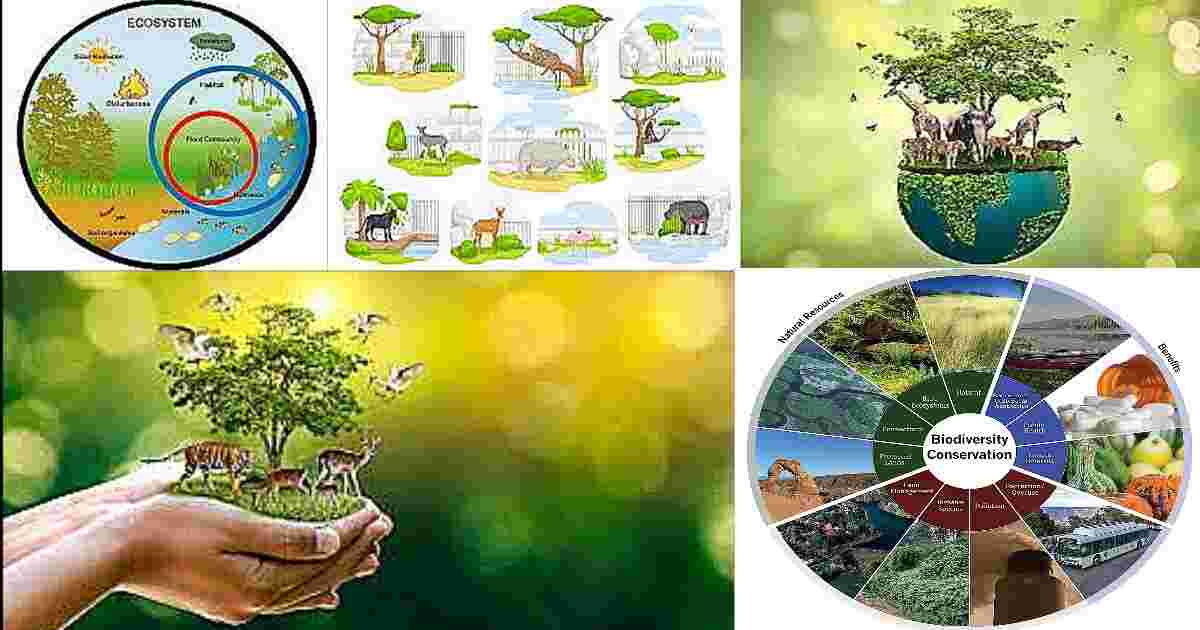Zoology: Zoology and the environment are closely interconnected fields that study living organisms and their interactions with the natural world.
What is Zoology?
Zoology is the branch of biology deals with study of animals, including their behavior, anatomy, physiology, genetics, distribution, and evolution. It encompasses a wide range of topics related to animals, from the smallest insects to the largest mammals.
The physical, chemical, and biological elements that affect the species that inhabit a certain area are collectively referred to as the environment. There is a mutually beneficial interaction between zoology and environment. Animals interact with and have an impact on their surroundings, and the environment offers the resources and habitat required for them to live healthy lives.
What is Environmental Zoology?
Environmental zoology is an interdisciplinary branch of science that integrates principles from zoology (the study of animals) with environmental science. It focuses on understanding how animals interact with their environment, including both living (biotic) and non-living (abiotic) factors. Researchers in this field explore the impact of environmental changes on animal populations, behavior, physiology, and adaptations. Environmental zoology is a fascinating field that bridges the gap between biology and environmental science
Relation in Zoology and environment
there are different key aspects of relationship in zoology and environment as follows.
Ecosystems:
Animals are integral components of ecosystems. They interact with other organisms, such as plants, predators, prey, and symbiotic partners, shaping the dynamics of ecosystems. For example, predators regulate prey populations, herbivores influence plant distribution, and pollinators facilitate plant reproduction.
Biodiversity:
Zoology contributes to our understanding of biodiversity, which is the variety of life forms in a given area. Animals play a vital role in maintaining biodiversity by occupying various ecological niches and participating in intricate food webs. Changes in the environment, such as habitat destruction or climate change, can impact animal populations and lead to biodiversity loss.
Conservation:
Zoologists study animal species to assess their conservation status, understand their ecological requirements, and develop strategies to protect them. Conservation efforts aim to preserve habitats, prevent species extinction, and maintain healthy ecosystems. The environment plays a crucial role in these efforts, as the conservation of animals depends on the preservation of their natural habitats.
Environmental Adaptations:
Animals have evolved various adaptations to survive in different environments. Zoologists study these adaptations to understand how animals cope with factors like temperature, humidity, food availability, and other environmental variables. This knowledge helps us comprehend how animals respond to environmental changes, including human-induced alterations.
Human Impact:
Human activities significantly influence both zoology and the environment. Factors such as pollution, deforestation, habitat fragmentation, climate change, and overexploitation of resources directly affect animal populations and their habitats. Zoology helps us understand the impacts of human actions on wildlife and ecosystems, enabling us to develop sustainable practices and mitigate harmful effects.
Environment and Animal life
The environment and animal life are interconnected and play vital roles in maintaining the balance of ecosystems on Earth. Here’s some information on these topics:
Environment:
The environment refers to the natural surroundings in which organisms live and interact. It includes the air, water, land, and all the living organisms within these habitats. The environment encompasses various ecosystems, such as forests, grasslands, deserts, oceans, and freshwater bodies.
Environmental factors, such as climate, weather patterns, topography, and the presence of living organisms, shape the characteristics and dynamics of different ecosystems. The environment provides essential resources like food, water, shelter, and energy, which are necessary for the survival and well-being of all living beings, including humans.
However, human activities have significantly impacted the environment over the years. Issues like pollution, deforestation, habitat destruction, climate change, and resource depletion have posed significant challenges to environmental sustainability. Recognizing the importance of protecting the environment, efforts are being made worldwide to promote conservation, sustainable practices, and the transition to renewable energy sources.
Animal Life:
Animal life refers to the diverse range of organisms that belong to the kingdom Animalia. This kingdom includes a vast array of species, from microscopic organisms to large mammals. Animals play crucial roles in ecosystems as consumers, prey, predators, pollinators, decomposers, and contributors to nutrient cycling.
Animals have evolved over millions of years and have adapted to various habitats, allowing them to thrive in different environments, from deserts to rainforests and from polar regions to deep-sea ecosystems. They exhibit an incredible diversity of forms, behaviors, and ecological functions.
However, animal life faces numerous challenges due to human activities and environmental changes. Habitat loss, pollution, climate change, overexploitation, invasive species, and poaching are among the major threats to animal populations. These factors have led to the decline and even extinction of many species. Conservation efforts aim to protect and restore animal habitats, mitigate human impacts, and preserve biodiversity for the benefit of both animals and ecosystems.
It’s crucial to recognize the importance of the environment and animal life and work towards sustainable practices that ensure their protection and conservation.
In summary, zoology and the environment are closely intertwined disciplines. Zoology focuses on the study of animals, while the environment encompasses the physical and biological factors that shape the natural world. Understanding the complex interactions between animals and their environment is essential for conservation, biodiversity preservation, and the sustainable management of ecosystems.



